The Ice Lake Benchmark Preview: Inside Intel's 10nm
by Dr. Ian Cutress on August 1, 2019 9:00 AM EST- Posted in
- CPUs
- Intel
- GPUs
- 10nm
- Core
- Ice Lake
- Cannon Lake
- Sunny Cove
- 10th Gen Core
System Results (15W)
When testing a laptop system, there are various angles to consider on how to test: either user experience benchmarks, that are mostly single threaded and give a good boost to how systems implement a deal of turbo, or sustained benchmarks that test how the system performs when you push it. Intel has gone out of its way to emphasise the former for the next generation of mobile CPUs: they would prefer that reviewers stick to very user experience-like tests, rather than say, rendering programs. The problem there is that outside a number of canned benchmarks, it can be difficult. Users, and especially creators, that typically spend a lot on a premium device, might actually be doing sustained benchmarks.
Given the time that we had to test, we were actually limited in what we could arrange.

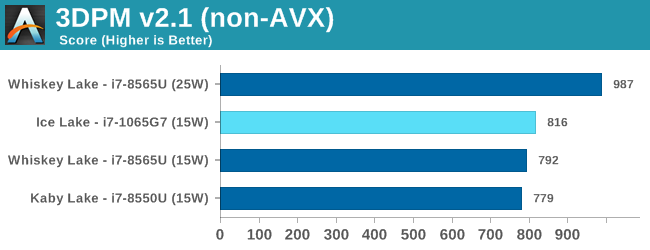

On AVX-512, the Ice Lake part destroys the competition.
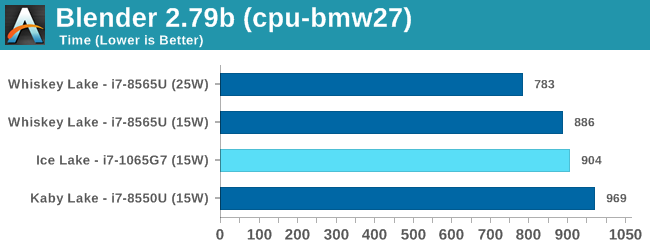
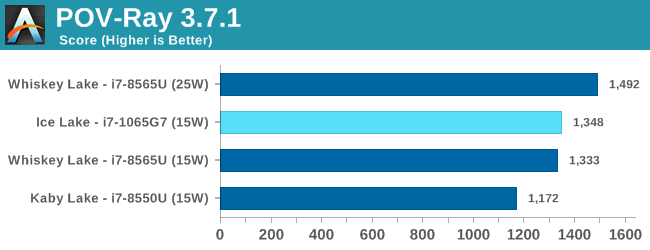


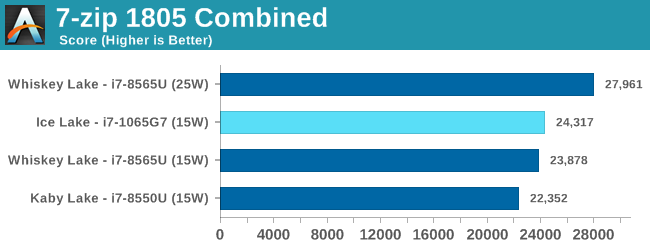
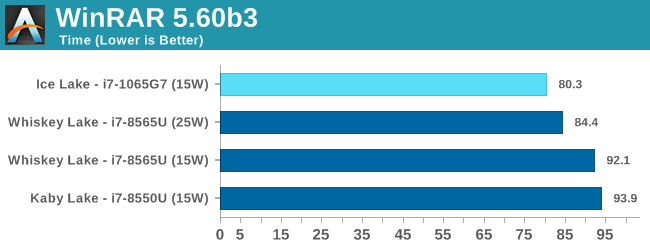
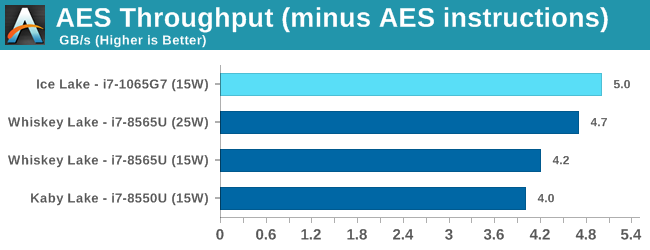
These last two tests are typically our more memory sensitive tests, and the LPDDR4X-3733 really does win out over the LPDDR3-2133 in the other systems.










261 Comments
View All Comments
KAlmquist - Friday, August 2, 2019 - link
So Intel has produced a significant jump in IPC for for the first time in a long while, but they aren't going to bring it to the desktop any time soon. 7nm is targeted for 2021, but even if it is delivered on time the plan is to initially use it for data center products (a General-Purpose Graphics Processing Unit, to be followed by some Xeon processors). I've been expecting Ryzen 3XXX prices to fall over the next six months, but AMD may have no reason to reduce prices if Intel isn't planning to compete.Comagnum - Thursday, August 1, 2019 - link
These processors look.. unimpressive.PeachNCream - Thursday, August 1, 2019 - link
Yup.Arbie - Thursday, August 1, 2019 - link
The gaming results section would really benefit from a clear statement of the video resolution in each case (I didn't see that anywhere in the article), and at least one comparison to a discrete graphics card.Ian Cutress - Thursday, August 1, 2019 - link
It's there in the title of the graphArbie - Friday, August 2, 2019 - link
I've been through too many generations of monitors, I guess. The default now would be 16:9 so the title bar numbers are clear enough. Except World of Tanks resolution wasn't apparently listed; but that's rare enough that I doubt it would be much use in comparing to other GPUs.Elstar - Thursday, August 1, 2019 - link
This appears to be an editing error:"POPCNT Microcode 50% faster than SW (under L1-D size)"
The comment must apply to something other than POPCNT (which is trivial to implement). I'd wager this comment refers "REP MOVS" given the next line is about "REP STOS".
nivedita - Thursday, August 1, 2019 - link
“Throughout most of the last decade, Intel has kept the same cache configuration among its server cores with very few changes, aside from improving the micro-op cache through Sandy Bridge today, but with Sunny Cove, we get some key updates.“Didn’t the cache hierarchy change considerably in skylake, with l2 growing and l3 becoming non-inclusive? Or am I misremembering?
Elstar - Thursday, August 1, 2019 - link
You're thinking about the server variant of Skylake. This article is about the "client" variant of Skylake (i.e. the one with integrated graphics, etc) and therefore the commentary about caches is valid.psychobriggsy - Thursday, August 1, 2019 - link
1. Still months from availability, so this is a very early preview. This is obviously going to bring up cries of paper launch and Intel marketing, but no website would have turned it down. I don't think the article is kind.2. Gains are negligible.
3. Lower base clocks, all-core turbo and 1C turbos are highly concerning for the 10nm process compared to Whiskey Lake.
4. 'extra binning required' for the 28W SKU means that not many dies can make this, this is the 10nm limit for Intel.
5. AVX512 is a beast
6. Better GPU drags Intel from being way-behind to not being an embarrassment.